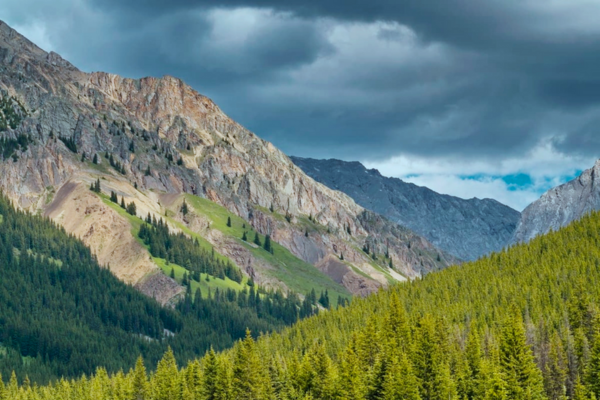Media Statement
May 6, 2020
Two years ago, at the end of April 2018, when the snow melted in the Rocky Mountains, a forestry road crossing Silvester Creek blew out. Silvester Creek is Critical Habitat for threatened native westslope cutthroat trout. The road then leaked large amounts of sediment into the clean water that the trout rely on to survive.
Alberta’s Forest Act requires forestry and road leaseholders to maintain roads to standard. Canada’s Species at Risk Act prohibits damage or destruction of Critical Habitat for species at risk. The Acts outline that individuals and companies can be held accountable if these rules are contravened, and allow two years to investigate and lay charges. Yet, the two-year deadline has come and gone without so much as a slap on the wrist.
The road was known to be problematic during spring runoff, yet inadequate bridge and road maintenance resulted in this significant sediment release into Critical Habitat in 2018. The road was owned and operated by Spray Lakes Sawmills of Cochrane, Alberta.
This is very poor practice for any watercourse, but particularly for such an ecologically important stream as Silvester Creek.
Sediment release into critical habitat can be fatal and significantly impacts the ability of trout to successfully feed, grow, and reproduce. Dave Mayhood, an aquatic ecologist who has been studying Silvester Creek for the last decade, says, “Suspended sediment loading to this creek has been sufficient to kill 40 to 60 percent of eggs and larvae in this cutthroat trout population during spawning and egg incubation periods. Most of that fine sediment comes from runoff from the dense resource road and off-road trail network in the catchment. The population has declined by nearly 75 percent over a ten-year period.”
Katie Morrison, Conservation Director with Canadian Parks and Wilderness Society Southern Alberta Chapter says, “We are concerned to not only see the destruction of critical habitat for this threatened species, but the apparent lack of corporate accountability in this case. Just last summer, charges were brought against an individual and a local motocross club for similar offences of damaging critical habitat. The individual and club were found guilty and fined a total of $70,000. Yet in this case the government has chosen to let the forestry company off without consequences.”
This incident is only one of many on-the-ground examples of how current logging operations along the Southern Eastern Slopes of Alberta are not protecting our threatened native fish. There are many ongoing issues like this that continue to contribute to the decline of westslope cutthroat trout, including poorly placed and maintained roads, inadequate forest buffers to protect sediment from reaching streams and levels of clearcut logging, roads and motorized trails in watersheds with threatened trout.
“While restoration is an important piece of the puzzle, repairing damage after impacts does not help prevent future degradation of habitat or recover our important native trout. We need to take immediate steps to reform forestry and land-use in this part of the province if we are to actually recover threatened species,” says Morrison.
Alberta’s native fish continue to fall between the cracks of federal and provincial legislation with neither government upholding their responsibilities to protect and recover threatened native fish. “How can we expect these laws to be taken seriously if there are no consequences when they are broken?”
More News

All-Seasons Resort Policy Released

Critical Habitat and Industry Lobbying Part 4: How DFO Allows Critical Habitat Destruction


